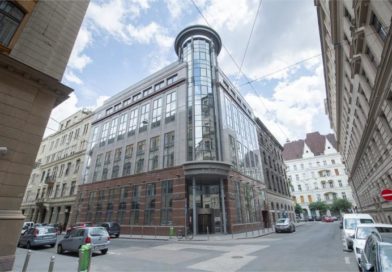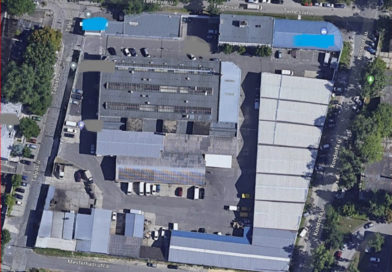Transparency in Global Real Estate Markets Increases
A biennial index released today by Jones Lang LaSalle and LaSalle Investment Management (NYSE: JLL) reveals that recovering real estate markets have prompted renewed impetus to transparency improvements following a slowdown in progress during the financial crisis in 2008 and 2009.
Pearly 90 percent of markets have registered advances in real estate transparency during the past two years, driven by improving market fundamentals data and performance measurement, combined with better governance of listed vehicles.
The 2012 Global Real Estate Transparency Index, a proprietary Jones Lang LaSalle survey that calculates transparency in 97 real estate markets worldwide by weighting 83 different factors, provides investors and corporate occupiers with data and analysis critical to transacting, owning and operating in global markets. The Index also assists governments and other industry organizations interested in improving transparency.
Among key findings from the report:
• The United States ranks as the world’s most transparent real estate market in 2012, followed closely by the United Kingdom and Australia. Also in the ‘Highly Transparent’ category: Netherlands, New Zealand, Canada, France, Finland, Sweden and Switzerland.
• The gap in transparency between Western Europe and some of the main Central European markets has been virtually eliminated as core CEE markets approach the mainstream. Ranked 19th globally Poland, for example, has transparency levels comparable to Western Europe and is now considered by some investors as a ‘core’ market.
• Environmental sustainability has emerged as an important transparency factor with the United Kingdom, Australia and France the most transparent markets in terms of real estate sustainability. The Czech Republic, CEE leader in the sustainable development, has occupied the 5th position in the world-wide ranking.
• The Index reaffirms the ascent of the MIST growth markets (Mexico, Indonesia, South Korea and Turkey), which all feature among the leading improvers. Turkey once again leads in transparency improvement, with Romania and Croatia rated 4th and 5th respectively.
• Regionally, Latin America has seen the strongest progress in transparency. Brazil’s Tier 1 cities rank second globally in transparency improvement and now sits in the ‘Transparent’ category. Mexico sits in third position globally (in terms of progress).
While the world economy is still in recovery, the 2012 Index reveals that real estate investors and corporate occupiers are widening their activity across a broader range of markets. This cross-border activity encourages faster rates of transparency improvement in growth and emerging economies as the markets open up further to international competition and their real estate sectors embrace global best practices.
Notably, the 2012 Index highlights continued transparency deficiencies in many African, Middle Eastern and Latin American markets. Nations scoring the lowest on transparency, the so-called opaque markets, include Venezuela, Mongolia, Tunisia, Ghana, Iraq, Pakistan, Algeria, Belarus, Angola, Nigeria, and Sudan. Many of these countries were scored for the first time in this edition of the Index.
John Duckworth, Managing Director, Central and Eastern Europe at Jones Lang LaSalle said: “Central and Eastern Europe is a clear beneficiary of the greater cross-border activity of investors. Strong market fundamentals encourage more capital flows and the region is a leading outsourcing destination in Europe. Importantly, markets such as Poland, the Czech Republic, Hungary and Slovakia have seen transparency levels enhanced by the establishment of Research Forums in the major cities. These collaborative forums were founded by international real estate service firms such as Jones Lang LaSalle to provide a platform to share non-sensitive real estate market information. Forums have been set up for the Warsaw, Prague, Brno, Budapest, Bratislava, Bucharest, and major Polish office markets, and there are plans to extend into more CEE cities such as Zagreb and Belgrade. Industrial and Retail forums either exist as for example in Poland, or are being organised.”
“Increased real estate market transparency in Central and Eastern Europe is also demonstrated by a growing number of research reports that international real estate consultancy companies are publishing. This is particularly appreciated by global and European investors with no representation in the region. I am pleased that the CEE countries of Poland, the Czech Republic and Hungary were rated in the “Transparent” group, ranked globally 19th, 24th, and 26th respectively.” added Kevin Turpin, LEED Green Associate and Head of Research, Central and Eastern Europe at Jones Lang LaSalle.
In recognition of the increasing relevance of environmental sustainability in real estate decisions, the 2012 Index now includes a separate Real Estate Sustainability Transparency Index for a sub-set of 28 countries, covering issues such as energy efficiency benchmarking and green building rating systems. The United Kingdom, Australia and France have emerged as the most transparent markets in terms of real estate sustainability.
’’From the 28 countries surveyed, the Czech Republic has ranked very highly in the “Transparent” segment. Whilst the country is still quite some way behind markets like France and the UK in terms of legislation, it does have its own certification system, SB Tool, who’s data is publicly available. Sustainability in the property sector is rapidly becoming more important to a wide range of parties including, developers, investors and occupiers. As a result, the data and information behind it also needs to become increasingly transparent in order to benchmark our progress in reducing the damaging effects to our environment.’’ added Turpin.
The 2012 results also reaffirm the relationship between real estate investment volumes and transparency. Rising levels of transparency are associated with higher levels of foreign direct real estate investment, a powerful incentive for encouraging the free flow of information as well as the fair and consistent application of local property laws.
Tomasz Trzósło, Head of Capital Markets, Central and Eastern Europe at Jones Lang LaSalle commented: “The gap in transparency between Western Europe and the main Central European markets has been clearly bridged, with Poland seen by increasing number of investors as a ‘core’ market. This is being confirmed by the investment volumes. In the first quarter of this year for example, Poland had retail investment transactions volumes at € 465 million, only behind the UK and Germany. Also, the two most transparent countries in the CEE according to the Jones Lang LaSalle’s Global Real Estate Transparency Index, namely Poland and the Czech Republic, had by far the highest investment volumes in the region. This of course goes together with the macroeconomic picture of these two countries, but we believe the improved transparency picture increasingly adds to this investment trend, and will continue to have an impact in the future.”
About the Global Real Estate Transparency Index
The Global Real Estate Transparency Index, first published in 1999, is based on a combination of quantitative market data and information gathered through a survey of the global business network of Jones Lang LaSalle and LaSalle Investment Management. For each market a total of 83 separate factors have been assessed, through data collection and survey questions, answered by local research teams in collaboration with business leaders. These 83 factors are grouped into 13 topic areas and further grouped into five sub-index categories – a) performance measurement, b) market fundamentals c) governance of listed vehicles d) regulatory and legal and e) transaction process. A Composite Index for each market is created from the weighted scores of the 83 factors. The scores range on a scale from 1.0 to 5.0. A country or market with a perfect 1.0 score has total real estate transparency; a country with a 5.0 score has total real estate opacity. Countries/markets are assigned to a one of five transparency levels ranging from Highly-Transparent, Transparent and Semi-Transparent to Low-Transparency and Opaque.
For investors, the Index provides a risk management tool by offering comparative information across multiple geographies, facilitating informed global/regional investment strategies and country target allocations. The Index enables corporate occupiers to more efficiently assess different real estate operating environments across the globe. Transparent markets allow for easier comparison of occupancy costs; provide more options for strategic action (e.g. the execution of sale and leasebacks); and raise the efficiency of transactions and facilities management.
In addition to the new sustainability sub-set, the 2012 index has been enhanced in three main areas. The 2012 edition:
• Incorporates more quantitative measures of real estate investment performance relating to directly owned real estate, public real estate securities and unlisted real estate funds.
• Deepens the coverage of real estate market fundamentals, by incorporating detailed empirically-derived measures of time-series data and database availability.
• Expands the Index into new markets in sub-Saharan Africa (i.e. Angola, Botswana, Ghana, Kenya, Mauritius, Nigeria and Zambia) and Central America (i.e. the Bahamas, Cayman Islands, Guatemala, Honduras, Jamaica and Puerto Rico), as well as Brazil’s Tier 2 cities, Iraq, Mongolia and Serbia. The Index now covers 97 markets, 16 more than in 2010.
The 2012 Global Real Estate Transparency Index is available to investors and occupiers in multiple platforms, including report, website, PowerPoint and webinar.































